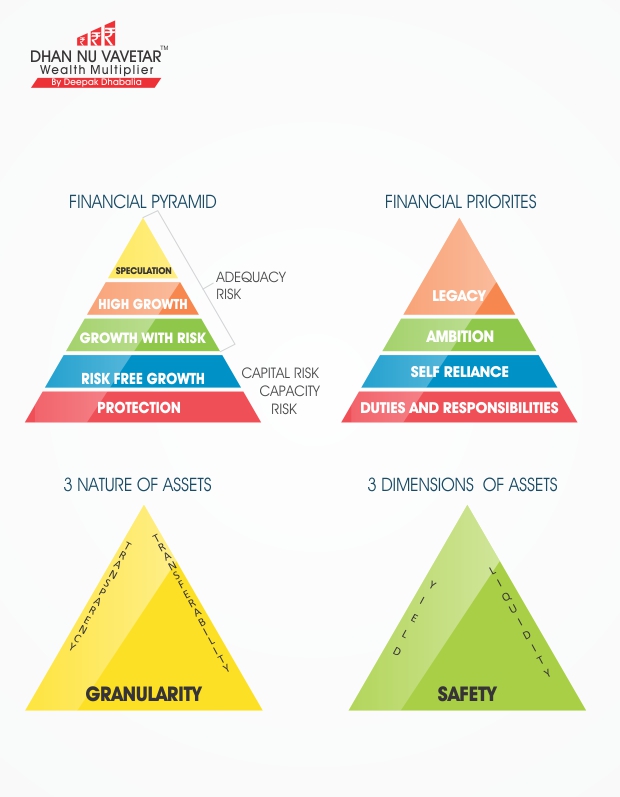THE POWER OF DIVERSIFICATION
“A good portfolio is more than a long list of good stocks and bonds. It is a balanced whole, providing the investor with protections and opportunities with respect to a wide range of contingencies.”– Harry Markowitz
Maintaining a diversified portfolio is crucial to any long-term investment strategy, irrespective of the current market trend. A diversification strategy reduces the investment risk and hence helps you to achieve more consistent returns over time.

ALLOCATE YOUR ASSETS
Asset allocation is the distribution of your investments into different asset classes like equities, property, gold, fixed deposits, bonds, and cash. There is no single asset, which offers positive real returns under all conditions. Hence, effective asset allocation is important. It helps you to allocate your investments across multiple asset class to help balance the risk and rewards.
SPLIT YOUR SHARE PORTFOLIO ACROSS SECTORS
In addition to balancing asset classes, it is always recommended to balance your share investments across different industry sectors. By doing so, you can help to balance your portfolio irrespective of the market being bearish or bullish.
Further, the diversification of your share investment can help you better and consistent returns over time.
OVERWEIGHT, EQUALWEIGHT OR UNDERWEIGHT
Analysts give their opinion on the future performance of stocks. They rate a stock based as overweight, equal weight or underweight based on its previous performance, analysis, demand etc. An overweight rating means the stock is expected to outperform its industry in the market.
An analyst gives a stock an overweight recommendation if they believe that the stock will give greater returns than the average return of the market over a defined time framed.
HIGHER RISK V/S LOWER RISK COMPANIES
Higher risk companies can be defined by their tendency of price volatility and can be profitable investments. For example, if we assume your age is 30 years, 30% of your portfolio should be the low-risk investment and rest 70% of your investment should be high-risk investments. This will balance your portfolio and the risk-return with investments in companies that have the potential for slower, stable growth yet less risk of capital loss as well as companies that have the potential for faster yet risky growth due to return volatility.
Depending on what type of investor you are and the risk tolerance you can choose the product. Before pumping money, discuss and consult a financial expert. A financial expert can help you to determine what is the right approach and the right strategy for you.
Want to multiply your wealth? Request a call to connect with a financial expert.
Ready to start investing in equity? Request a call to connect with a financial expert.





